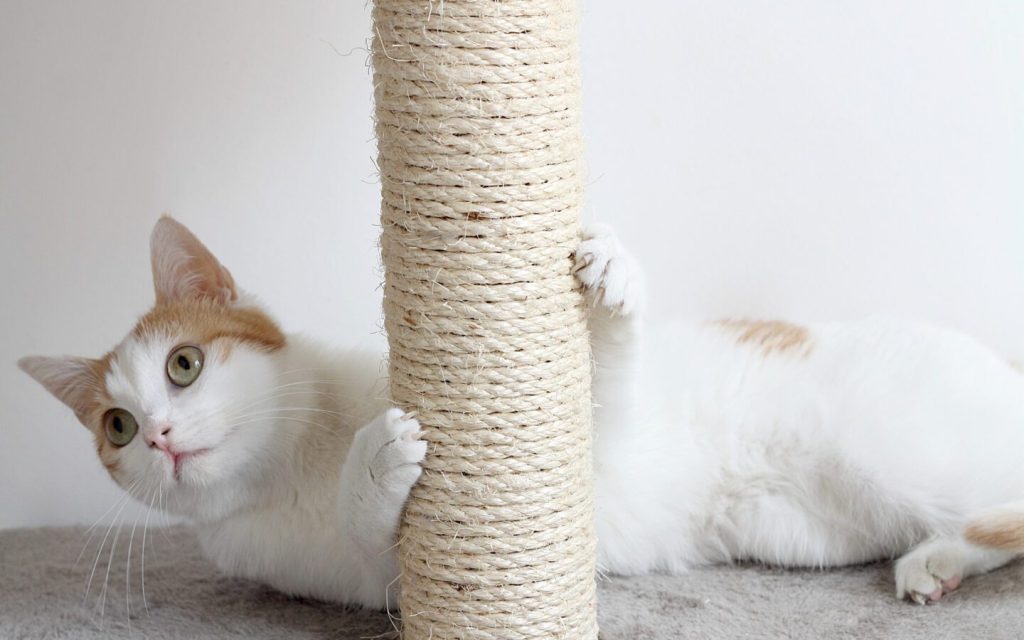Effective Behavioral Training Techniques for Cats: Tips for Nigerian Owners

Understanding Cat Training Techniques for Nigerian Cat Owners
Building a strong bond with your cat is not solely about affection; it requires understanding and mutual respect built through effective training. For Nigerian owners, it’s essential to employ training strategies that acknowledge local culture and the unique characteristics of cats. Understanding your cat’s needs and behaviors will enhance the overall quality of life for both you and your pet.
Positive Reinforcement
One of the most effective methods for training cats is positive reinforcement. This technique involves rewarding your cat for good behavior, such as using the litter box appropriately or scratching designated surfaces like scratching posts. Rewards can be treats, praise, or playtime. For example, if your cat uses the scratching post instead of the sofa, you might give it a small treat and affection. This not only encourages good behavior but also helps establish trust between you and your feline friend.
Consistency is Key
Consistency in training is crucial. Establishing regular routines in feeding, playtime, and litter box maintenance can significantly enhance your cat’s learning experience. Cats thrive on routine and predictability, so try to feed your cat at the same time each day and maintain a regular cleaning schedule for the litter box. This will help your cat understand what to expect and reduce anxiety over time, making it easier for them to adapt to training.
Reading Body Language
Understanding your cat’s body language is another vital aspect of training. Cats communicate their feelings and intentions through their body posture, tail position, and ear orientation. For instance, if your cat’s tail is upright and its ears are forward, it usually signifies that they are happy and confident. On the other hand, if your cat’s ears flatten and its tail twitches, it may indicate that it is stressed or annoyed. Learning these signals can help you adjust your training methods effectively, ensuring a smoother process.
Addressing Local Challenges
In Nigeria, cat owners often face unique challenges, such as adapting to local climate conditions and addressing prevalent behavioral issues. With the growing trend of keeping cats as indoor pets, owners must proactively teach desirable behaviors. For instance, providing scratching posts can help preserve furniture by giving your cat an appropriate outlet for their natural scratching instincts.

- Feeding Schedule: Consistently feeding your cat at the same time daily can support proper litter box training. This predictability reinforces good habits.
- Socialization: Regularly engaging with your cat as well as exposing it to various social settings—like gentle visits from friends or family—fosters confidence and reduces anxiety.
As you delve deeper into training techniques, these practical tips can serve as a foundation for improving your cat’s behavior and overall happiness. Adopting a thoughtful approach tailored to your environment not only enhances your cat’s well-being but also solidifies the bond between you and your feline companion.
Get ready to explore these effective methods that can transform your cat into a well-behaved member of your household while ensuring that you both enjoy a fulfilling and harmonious relationship.
SEE ALSO: Click here to read another article
Essential Techniques for Successful Cat Training
In the journey of training your feline friend, employing essential techniques can make a significant difference. Understanding your cat’s personality and preferences plays a crucial role in tailoring your approach. For Nigerian owners, certain environmental factors and common challenges specific to the region further emphasize the need for effective strategies that promote not just compliance, but a strong bond between you and your cat.
Utilizing Clicker Training
Clicker training is an innovative method that has gained popularity among pet owners around the world, including Nigeria. This technique relies on a small handheld device that emits a sound—typically a short ‘click’—to mark the desired behavior instantly. The process is straightforward: each time your cat performs a behavior you want to encourage, you click and then reward them with a treat. This immediate feedback helps your cat associate the action with a positive outcome, reinforcing the desired behavior.
This method can be particularly effective for teaching commands or tricks, such as sitting on command, which not only keeps your cat mentally engaged but also enhances your interaction. Incorporating local treats made from accessible ingredients can add to the incentive—think of using small pieces of cooked fish or chicken that appeal to your cat’s palate.
Creating a Cat-Friendly Environment
Another key factor in successful training is creating a cat-friendly environment. This means ensuring that your home has essential resources that support desirable behaviors. Providing multiple options for scratching, climbing, and hiding are essential to nurture your cat’s instincts. For instance, using more traditional cat furniture, like cat trees and shelves, aligns with your cat’s natural climbing tendencies and keeps them active.
- Establish Activity Zones: Designate specific areas for play and exploration, encouraging your cat to be more active and less prone to boredom-related mischief.
- Provide Litter Boxes: Ensure that you have enough litter boxes (ideally one per cat plus one extra) and place them in quiet, accessible locations. This promotes consistent litter box use and prevents accidents.
- Interactive Toys: Utilize toys that encourage physical activity, such as feather wands or laser pointers, to stimulate your cat both physically and mentally.
By focusing on creating an environment that facilitates training, Nigerian cat owners can help their pets feel secure and engaged. This foundational aspect of training can pave the way for effective learning and behavior modification, ensuring that your cat thrives in your home.
As you begin to implement these techniques, remember that patience and understanding are your best allies. Each cat learns at their own pace, and the goal is to enhance their natural behaviors while building a robust partnership between you and your furry companion. The combination of innovative training methods and a supportive environment will prove invaluable as you navigate the rewarding landscape of cat ownership.
| Training Techniques | Benefits for Owners |
|---|---|
| Positive Reinforcement | Encourages desired behavior, minimizing the use of punishment. |
| Clicker Training | Provides clear communication, making training efficient and engaging. |
| Environmental Enrichment | Reduces boredom-related behavioral issues, leading to a healthier pet. |
| Desensitization Techniques | Helps cats cope with stressors, improving their overall well-being. |
As a Nigerian cat owner, employing effective behavioral training techniques can significantly enhance your relationship with your feline friend. For instance, positive reinforcement not only cultivates a harmonious home environment but also builds trust between you and your cat. Training sessions that use enjoyable rewards can change negative habits into positive behavior, which is essential in a region often bustling with distractions.Furthermore, clicker training serves as a powerful communication tool, making it easier for both you and your cat to understand each other’s expectations. This interactive training method ensures that your pet learns quickly, as it directly links the sound of the clicker to an action, leading to faster learning outcomes.Another impactful strategy is environmental enrichment. By providing a stimulating environment filled with toys and activities, you can deter unwanted behaviors that often arise from boredom. This approach not only keeps your cat entertained but also encourages physical and mental exercise, crucial elements for a thriving pet.Lastly, desensitization techniques empower you to help your cat manage and adapt to potentially stressful situations. This is particularly pertinent in busy Nigerian households, where sudden loud noises and changes can disturb your pet’s tranquility. Implementing these techniques can greatly enhance your cat’s resilience and comfort, granting you peace of mind as an owner. Explore these effective training techniques further to unlock a deeper bond and mutual understanding with your beloved feline companion.
RECOMMENDED: Check out this similar article
Advanced Techniques for Behavioral Training
Once you have established a solid foundation with basic training techniques, you can delve into more advanced methods that can further enhance your cat’s behavior. Understanding that cats are complex creatures with unique temperaments is crucial for Nigerian owners hoping to enrich their training experience.
Positive Reinforcement and Treats
Positive reinforcement is the cornerstone of effective training. This method involves rewarding desirable behaviors with treats, affection, or playtime. In Nigeria, using locally sourced treats such as dried fish or chicken can enhance this experience, as these are often favorites among cats. The key here is consistency: align the reward closely with the behavior you wish to reinforce to ensure your cat makes the connection.
Moreover, consider the timing of rewards. Offering treats immediately after your cat performs the desired action helps them understand the cause-and-effect relationship. Additionally, for more challenging behaviors, break down tasks into small, manageable steps, praising each small achievement along the way. This approach keeps your cat motivated and engaged.
Socialization through Gradual Exposure
In a bustling environment like Nigeria, socialization is a vital aspect of behavioral training. Exposing your cat to various environments, sounds, and people in a gradual and controlled manner can promote confidence and reduce fearfulness. Begin by introducing your cat to different rooms of your home, then slowly expose them to outdoor spaces when they seem ready.
It is advisable to utilize a leash and harness for outdoor training sessions to ensure your cat feels secure. Over time, you can create positive associations with these new environments by bringing along their favorite treats or toys, turning the experience into a rewarding adventure. Just remember to be observant of their reactions to avoid overwhelming them, and always prioritize their comfort.
Providing a Routine and Structure
Cats thrive on routine, which helps them feel secure and balanced. Establishing a daily schedule for feeding, playtime, and training can aid Nigerian cat owners in managing their pet’s behaviors effectively. Feline behaviorists suggest creating a structured timeline for activities to minimize unwanted behaviors that arise from boredom or anxiety. This means setting specific times for meals, play, and quiet time to encourage your cat to engage in healthy behaviors.
Additionally, reinforcing the value of consistency within your household is essential. Ensure that all family members are on board with the training techniques used and the expectations set for the cat, as mixed signals can confuse the animal and frustrate training efforts.
Using Environmental Modifications
Another approach to effective training is modifying the cat’s environment to reduce undesirable behaviors. For instance, if you notice your cat is scratching furniture, directing them towards appropriate scratching posts by placing them strategically in desired areas can discourage bad habits. Also, you might consider using repellents or double-sided tape on surfaces you wish to protect, as the unpleasant texture will deter scratching.
- Feline Enrichment: Incorporating vertical spaces like cat trees allows cats to climb and explore, which aligns with their natural instincts.
- Interactive Feeders: Using puzzle feeders can stimulate your cat mentally and slow down their eating, providing both engagement and health benefits.
- Calming Aids: In stressful situations, such as fireworks or guests, providing calming pheromones through sprays or diffusers can help maintain a peaceful environment for training.
By employing these advanced techniques, Nigerian cat owners can cultivate a well-behaved, happy feline companion. Training is a continuous journey that, when approached with the right tools and mindset, can transform your relationship with your cat into a fulfilling and harmonious one.
CHECK OUT: Click here to explore more
Conclusion
In conclusion, the journey of behavioral training for cats in Nigeria can be both rewarding and enriching when approached with the right techniques and understanding. As we have explored, employing positive reinforcement is vital; rewarding your feline companion with locally sourced treats establishes a meaningful connection between their actions and the rewards they receive. Additionally, the importance of socialization cannot be overstated; gradual exposure to diverse environments and stimuli fosters confidence in your cat and helps them adapt to their surroundings.
Moreover, creating a structured routine enhances your cat’s well-being, as they thrive on consistency and predictability. By setting specific times for feeding, play, and training, Nigerian owners can reduce unwanted behaviors linked to boredom or anxiety. Environmental modifications, such as providing appropriate outlets for natural behaviors, are also essential in encouraging good habits and ensuring a harmonious living space.
Ultimately, every cat is unique, and understanding their individual temperament can guide you to tailor training methods that best suit their needs. The combination of patience, observation, and tailored techniques can lead to a transformative relationship between you and your cat. As you embark on this training journey, remember that it is not only about correcting undesirable behaviors but also about fostering trust and strengthening the bond you share with your feline friend. With these effective behavioral training techniques, you are well on your way to nurturing a confident, well-behaved, and happy cat that brings joy to your home.



